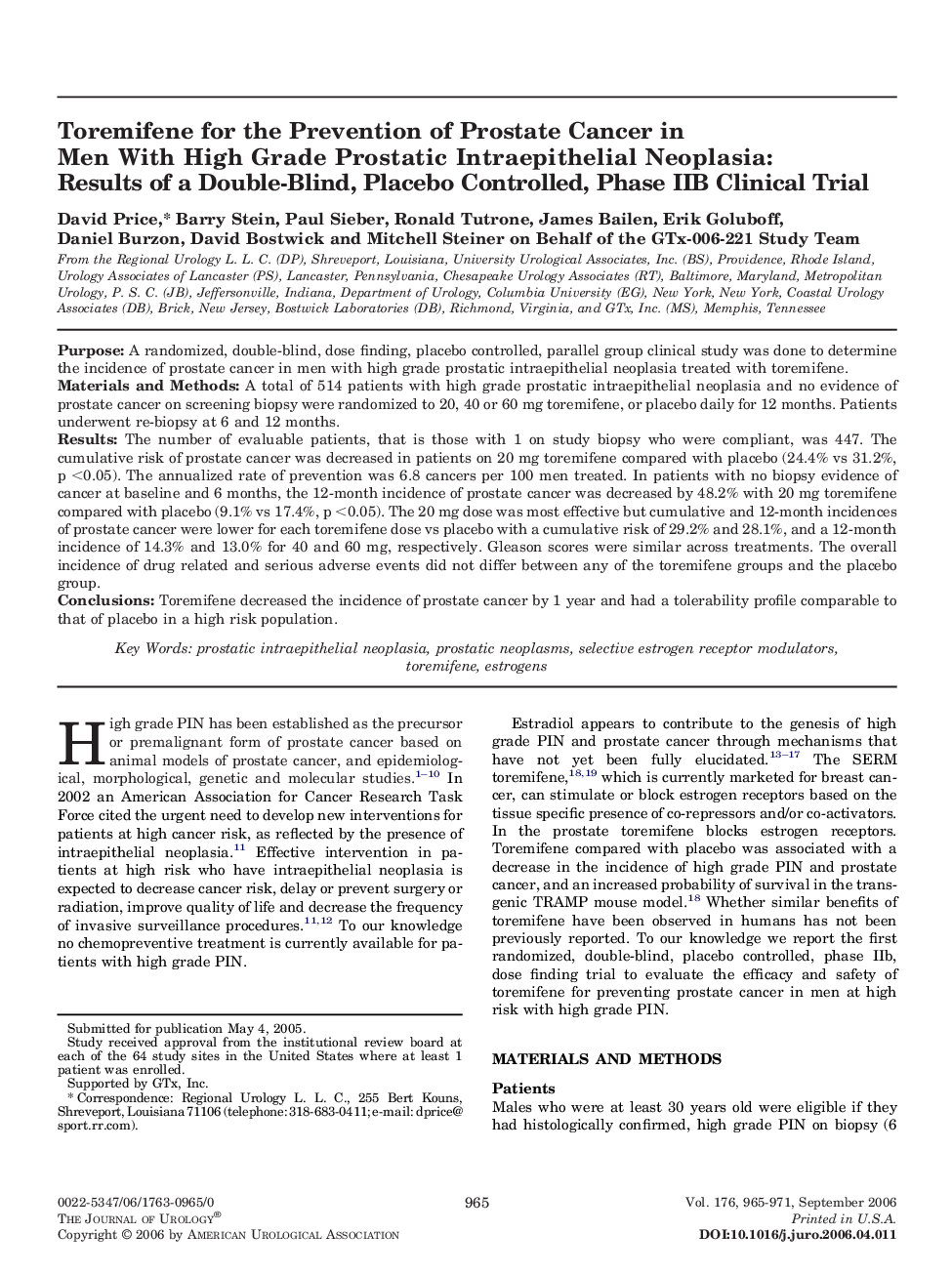| Article ID | Journal | Published Year | Pages | File Type |
|---|---|---|---|---|
| 3879239 | The Journal of Urology | 2006 | 7 Pages |
PurposeA randomized, double-blind, dose finding, placebo controlled, parallel group clinical study was done to determine the incidence of prostate cancer in men with high grade prostatic intraepithelial neoplasia treated with toremifene.Materials and MethodsA total of 514 patients with high grade prostatic intraepithelial neoplasia and no evidence of prostate cancer on screening biopsy were randomized to 20, 40 or 60 mg toremifene, or placebo daily for 12 months. Patients underwent re-biopsy at 6 and 12 months.ResultsThe number of evaluable patients, that is those with 1 on study biopsy who were compliant, was 447. The cumulative risk of prostate cancer was decreased in patients on 20 mg toremifene compared with placebo (24.4% vs 31.2%, p <0.05). The annualized rate of prevention was 6.8 cancers per 100 men treated. In patients with no biopsy evidence of cancer at baseline and 6 months, the 12-month incidence of prostate cancer was decreased by 48.2% with 20 mg toremifene compared with placebo (9.1% vs 17.4%, p <0.05). The 20 mg dose was most effective but cumulative and 12-month incidences of prostate cancer were lower for each toremifene dose vs placebo with a cumulative risk of 29.2% and 28.1%, and a 12-month incidence of 14.3% and 13.0% for 40 and 60 mg, respectively. Gleason scores were similar across treatments. The overall incidence of drug related and serious adverse events did not differ between any of the toremifene groups and the placebo group.ConclusionsToremifene decreased the incidence of prostate cancer by 1 year and had a tolerability profile comparable to that of placebo in a high risk population.
